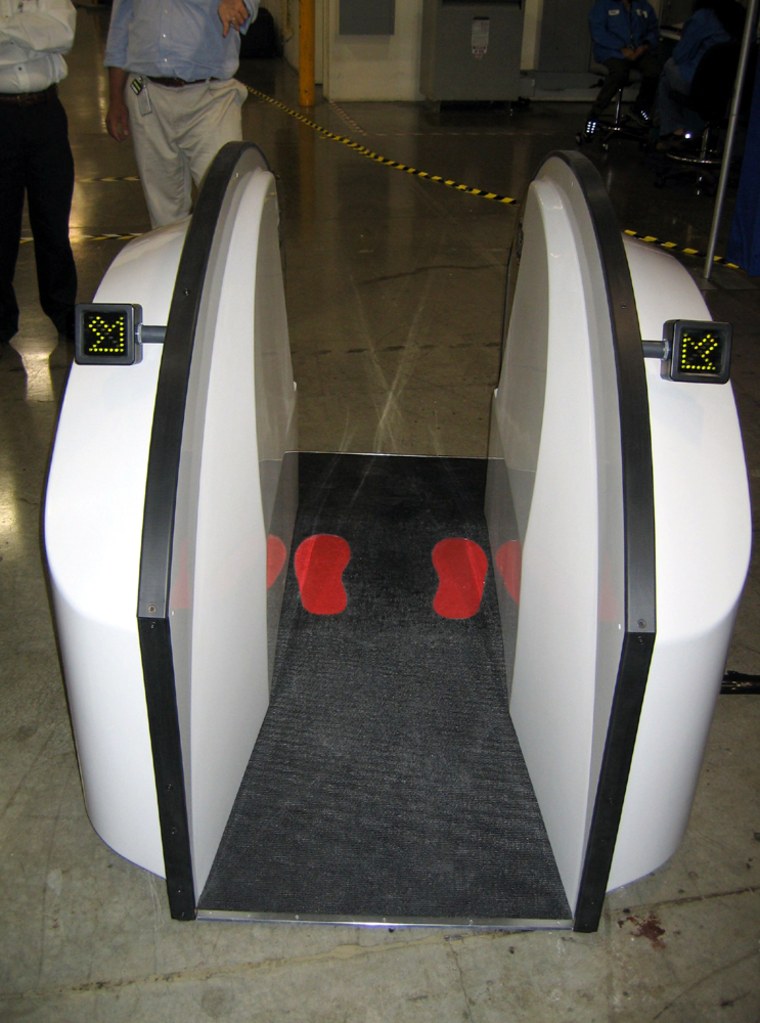If the Transportation Security Administration has its way, wearing flip flops through airport security checkpoints will once again be a lifestyle choice instead of an attempt to avoid the podiatric strip tease now associated with airline travel in the post-9/11 era.
According to a federal business opportunities web site, the TSA is inviting companies to voluntarily participate in a test program to develop technologies for “Shoe Weapons Inspection Systems (SWIS) that can inspect footwear for weapons without passengers having to remove or divest them from their feet.”
In other words: the TSA is looking for a technology that will scan your shoes for bombs without making you wander around airport security checkpoints in your bare feet.
The TSA says one of its most consistent complaints comes from people that have to walk around in bare feet on cold, linoleum airport floors. And until some kind of feasible technology to scan shoes is developed, the best the TSA can offer to stem the steady stream of complaints is: wear gym socks.
A brief history of shoe removal
Inspecting shoes has a storied history. In December of 2001, just three months after the terrorist attacks on New York and Washington, Richard Reid, dubbed the “shoe bomber,” failed to blow up a plane by igniting explosives stuffed into his sneakers.
Reid’s botched attempt so soon after 9/11 rattled federal security officials who hastily drew up plans requiring all shoes to be removed at airport checkpoints. That requirement was later relaxed; passengers are not required to remove their shoes today before going through checkpoints. However in the 9/11-era version of a Catch-22, the majority of those who do not remove their shoes are subsequently stopped just after passing through security metal detectors and made to remove their shoes anyway.
Lawmakers have continuously complained about the shoe removal policy and questioned TSA officials at hearings about its effectiveness.
And now the TSA is really looking for a few good technologies to address that problem and not just for use in aviation security, according to its published federal notice.
The TSA “is interested in measuring the state-of-the art, exploring advanced concepts of operation and assessing operational utility in pilot deployments at passenger checkpoints throughout the transportation security system,” says the notice.
However, the TSA also cautions that any technologies it qualifies for the purposes of further testing, even if taken to the pilot stage, may not result in the guaranteed purchase contract.
Back to the future
The concept of a shoe scanner isn’t new. Congress was told of such a scanner in early 2002 during hearings held as a result of Reid’s shoe bombing attempt.
At that time Lowell Burnett, then the president and CEO of Quantum Magnetics (now a subsidiary of GE Security) testified that his company had a prototype technology used for scanning shoes. It was developed as an outgrowth of the company’s landmine detection technology, he said.
Quantum Magnetics’ shoe scanner “is essentially an ‘upside-down’ mine detector,” Burnett told Congress. “When you stand on it for a few seconds, it quickly and accurately scans your shoes for explosives,” Burnett said.
And in fact, Quantum Magnetics’ device has already been tested in the real world, at San Diego’s Lindbergh airport, according to Steve Hill, a spokesman for GE Security. In those tests the device took about five seconds to scan a pair of shoes. (MSNBC is a joint venture of Microsoft and NBC, which is a GE company.)
Hill said the shoe scanner, part of the company’s “checkpoint of the future,” strategy, is intended to be deployed in various kinds of mass transit systems, including rail and subway.
